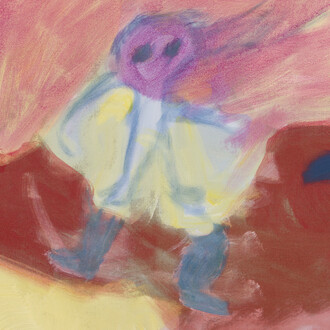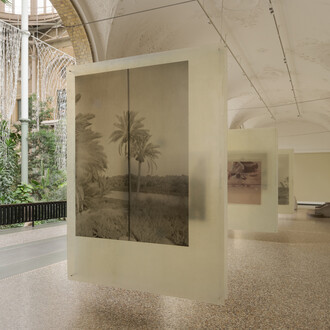In 2019, Kunsthal Charlottenborg puts Europe and the EU on the agenda with the group exhibition Europa Endlos presented in collaboration with CPH:DOX, one of the world’s most important documentary film festivals.
The exhibition runs during the spring of 2019 which is marked by two central events in EU politics: Brexit which is Great Britain’s planned exit for the European Union on 29 March 2019 as well as the elections to the European Parliament on 26 May 2019. Both events challenge the democracy and will affect the lives of millions of Europeans and further afield.
Curator Henriette Bretton-Meyer has selected art works created by a number of today’s most prominent artists, who look into stories and themes central to the upcoming EU elections such as identity, labour, borders, community and migration. The art works are exhibited in Kunsthal Charlottenborg’s north wing within a significant exhibition architecture and will be accompanied by numerous discussions, talks and film screenings in collaboration with CPH:DOX.
The exhibition presents installation, sculpture, film and photography by the international artists Monica Bonvicini (1965, Italy), Jeremy Deller (1966, Great Britain), Daniil Galkin (1985, Ukraine), Sara Jordenö (1974, Sweden), Bouchra Khalili (1975, Morocco), and some older exponents such as Jimmie Durham (1940, USA), the artist duo Fischli Weiss with Peter Fischli (1952, Switzerland) and David Weiss (1946 – 2012, Switzerland) as well as the pioneers Olafur Eliasson (1967, Iceland/Denmark) and Wolfgang Tillmans (1968, Germany). All the selected art works deal with current topics regarding Europe today and EU’s role in the future, some with an activist approach, others in a more documentary style.
Sara Jordenö’s film Diamond People (2016) is a documentary film about working conditions and globalization, and Bouchra Khalili’s film work The Tempest Society (2017) created for documenta 14 addresses among other things contemporary Greece in Europe and the refugee crisis through a narrative about the French theater group Al Assifa from the 1970s with North African migrants and French students.
Daniil Galkin’s installation Tourniqet (2015) represents the idea about Fort Europe, Olafur Eliasson’s compas Crossing-paths compass (2018) is a navigation instrument symbolizing travel, movement and the opportunity to orientate oneself, whereas Monica Bonvicini’s sculpture The Scale of Things (To Come) (2010) looks like part of a Greek amphitheater and thus brings to mind the cradle of democracy in the southern Europe – however, in Bonvicini’s version the place for dialogue and exchange is shaped by iron chains and is without railing.
Jimmie Durham and the Swiss duo Fischli Weiss have documented their travels in Europe and the world, respectively – Durham himself is portrayed in his photo series In Europe (1994–) which he started when he moved to Europe. Fischli Weiss has photographed hundreds of airports from their travels through the world; at Kunsthal Charlottenborg London, Amsterdam and Berlin are presented from their series Airports (1987–2012).
Both Wolfgang Tillmans and Jeremy Deller have respectively worked as activists taking clear stands against Brexit and in support of the European Union through poster and t-shirt campaigns.
















